Estimated reading time: 12 minutes
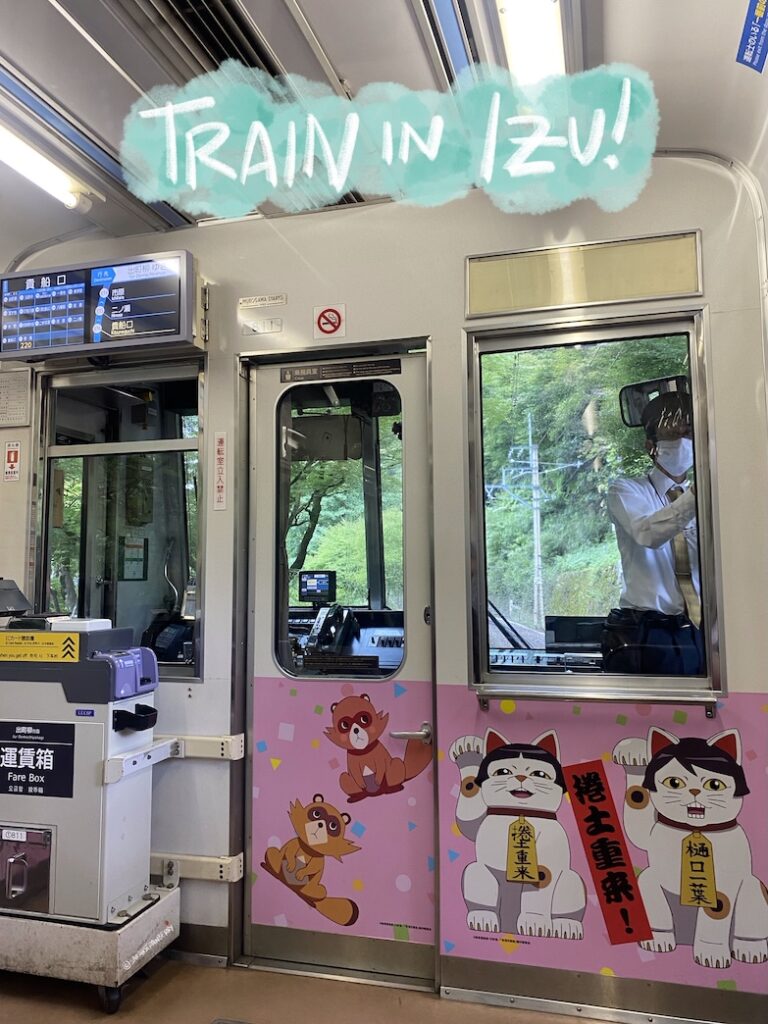
If you are a first-time visitor, Japan’s train might seem intimidating at first. As you learn to use it though, you’d find out why people love Japan’s clean, efficient, and extensive railway network! It really is one of the best in the world.
Train travel is what locals and tourists alike prefer to use to get around. Whether you use it or inner city travels or longer distances, I find that renting a car is unnecessary with the convenience of the train and shinkansen. With this guide from someone who recently traveled to Japan, you’ll be riding the rails like a pro in no time!
Buy a Japan Rail Pass for the most convenient traveling experience!
Table of contents
Understanding Japan’s Train Network
Japan’s railway network is a complex web of train lines operated by Japan Railways (JR) and various private companies. The network spans the entire country, connecting major cities and rural areas efficiently.
Japan Railways (JR)
JR is the largest railway company in Japan, operating about 70% of the country’s railway network. It’s divided into six regional companies: JR East, JR West, JR Central, JR Kyushu, JR Shikoku, and JR Hokkaido. These companies operate most of the long-distance trains and shinkansen bullet trains, as well as many local trains and some urban rail services.
Private Railways
In addition to JR, numerous private companies operate railway lines, especially in and around major cities. These private railways often provide services that complement the JR network, offering connections to areas not served by JR trains.
Do you need a JR Pass?
This pass is one of the most frequently bought train tickets for tourists. The JR Pass gives you unlimited access to JR-operated trains, ferry, and buses (not all!). It is quite expensive; it is being sold at ¥50,000 for a 7-day pass. They offer unlimited travel for the amount of days you buy the pass for.
Here are things you need to know to see if the JR Pass is worth it for your trip:
1. Extensive itinerary: If you are traveling long distances to multiple cities, it will be worth it! For example, a round-trip ticket from Tokyo to Kyoto can cost around ¥26,000 (approximately $240), which means that just two long-distance trips could make the JR Pass worthwhile.
2. Unlimited Travel: Are you visiting a lot of places in one day? The JR Pass offers unlimited access to all JR trains, including shinkansen (bullet trains), limited express trains, and local trains across the entire JR network for 7, 14, or 21 consecutive days. This flexibility allows you to explore various destinations without worrying about individual ticket prices.
3. Additional Discounts: The JR Pass also provides discounts at certain tourist attractions and hotels, as well as access to some non-JR services like the Tokyo Monorail to Haneda Airport. The full list is available here; definitely a perk if you are planning to visit these attractions!
If you are only exploring a certain region, you can buy a regional pass instead to save some money.
Types of Trains in Japan
Japanese trains come in various types, each serving different purposes:
1. Shinkansen Bullet Trains: These high-speed trains connect major cities, offering the fastest travel times for long distances.
2. Limited Express Trains: Faster than regular trains, they make fewer stops and are ideal for medium to long-distance travel.
3. Express Trains: Similar to limited express but with more stops.
4. Rapid Trains: Faster than local trains, they skip some stations.
5. Local Trains: These stop at every station and are best for short distances or getting to rural areas.
Buying Tickets
There are several ways to purchase train tickets in Japan:
IC Cards
IC cards like Pasmo or Suica are rechargeable smart cards that can be used on most trains and buses in major cities. They’re convenient for short distances and eliminate the need to buy individual tickets for each journey.
Ticket Machines
Automated ticket machines are available at all stations. Many have an English language option. For shinkansen and limited express trains, you may need to purchase a separate limited express ticket in addition to the basic fare ticket.
Ticket Office
For more complex itineraries or if you need assistance, visit the ticket office (often called the “Green Window” at JR stations).
Japan Rail Pass
For foreign tourists planning extensive travel, the Japan Rail Pass offers unlimited access to JR trains (including most shinkansen) for 7, 14, or 21 consecutive days. It’s often the best way to save money on long-distance train travel.
Navigating Train Stations

Japanese train stations range from small rural platforms to massive transportation hubs like Tokyo Station. Here’s what you need to know:
Ticket Gates
To enter the platforms, you’ll need to pass through ticket gates. Tap your phone, insert your paper ticket, or tap your IC card to enter and exit. Did you know that you don’t even have to open any apps if you have the Suica card in your Apple Wallet? Just tap! Yay for iPhone users!
Information Boards
Look for electronic displays showing departure times, platforms, and destinations. Most stations offer this information in English as well as Japanese.
Station Staff
For assistance, look for the ticket office or information counter. In major stations, some staff do speak English.
Once you enter a shinkansen station, you can also look for travel bento boxes! There are many specialty lunch boxes offered at the train station. It is called ekiben, and it is a quintessential Japanese experience you should try.
Planning Your Train Journey
Must-Have Travel Apps to Download
1. Google Maps
While not specifically designed for train travel, Google Maps is the best app to use in navigating. It offers detailed directions, estimated travel times, and fare estimates for various modes of transportation, including trains and buses (they even show you the fare!). It’s particularly useful for navigating within cities and comparing different travel options.
2. Apple Wallet (for Suica)
This is a must for iPhone users! Load your IC card in your Wallet and just tap to ride trains and buses. There will be a ticket gate before you enter any train station; simply tap to enter the station and wait for your train to arrive.
2. Japan Wi-Fi Auto-connect
This app is very convenient when you encounter unstable mobile networks! It connects to public Wi-Fi automatically. Do you absolutely hate having to enter your information to access the Wi-Fi? The app also auto-populates any registration form to connect.
Using Google Maps in Japan
Hands down, Google Maps is the handiest app if you don’t feel like downloading a new app to your phone. Conveniently, Google Maps also shows the Entrance and Exit numbers and the train car number to minimize walking. When you are already walking 20,000-30,000 steps in one day, avoiding an extra set of stairs can be lifesaving!
Train Etiquette

Japanese train etiquette is an important aspect of the country’s train culture:
- Keep noise to a minimum. Phone calls are generally frowned upon.
- Don’t eat or drink on local trains (it’s only ok on shinkansen and some limited express trains).
- Give up priority seats to older passengers, pregnant women, or those with disabilities.
- During rush hour, be mindful of other passengers and try not to take up too much space.
Tips & Tricks for a Smooth Train Journey
Seat Reservations
For long-distance trains, especially shinkansen, it’s a good idea to make seat reservations. This guarantees you a seat and can be done at ticket offices or at ticket machines in major stations.
This is even more important if you are bringing a big or oversized luggage! Any luggage above ABC in needs reservation of a luggage-friendly seat. If you did not reserve these special seats,
Rush Hour
Try to avoid traveling during peak hours (usually 7:30-9:30 AM and 5-7 PM) in major cities like Tokyo, as trains can get extremely crowded.
IC Card vs. Paper Tickets
For short distances and travel within cities, an IC card is more convenient. These cards can be used at all public transportations and for regular purchases (like at the convenience stores!). Some of the most common IC cards in Japan are:
- Suica: Available in the Tokyo, Niigata, and Sendai regions
- Pasmo: Available in the Tokyo region
- ICOCA: Available in the Kansai region, which includes Kyoto and Osaka
These cards are pretty much interchangeable, you can use it in any region in my experience. You might have to use the Fare Adjustment machine if you travel out of a particular region though, but the process itself is pretty straightforward.
Apple users, rejoice! You won’t need any physical IC card, as you can load one in your Apple Wallet as soon as you touch down in Japan. You just need to pick an IC card in your Wallet app and reload it with your credit card. No ticket machines necessary.
Sadly, Android users do not have the same convenience. As of 2024, only Japanese Android phones are able to load the IC card in the digital wallet.
For long-distance travel or if you’re using a rail pass, paper tickets are necessary. Don’t lose them- you might get checked by an inspector at an unfortunate time!
Shinkansen Travel
When riding the shinkansen, pay attention to which type of car you’re in. There are usually three types:1. Ordinary Cars: Standard seating
2. Green Car Seats: First-class seating with more space
3. Gran Class Cars: Available on some trains, offering premium services
Buy a Japan Rail Pass for the most convenient traveling experience!
Local Train Lines
Don’t overlook local trains and rural lines. They can offer scenic routes and a more authentic Japan experience, especially in rural areas.
Regional Train Differences
Tokyo and Kanto Region
The Tokyo Metro and other private railways complement the JR lines, creating an extensive network. The busiest stations like Tokyo Station, Shinjuku, and Shibuya can be overwhelming, so allow extra time when navigating these.
Kansai Region
Cities like Osaka and Kyoto have their own extensive networks, including subway systems and private railways. The JR West network is prominent here.
Rural Areas

In more remote parts of Japan, train services may be less frequent. Always check timetables in advance when traveling to rural areas.
Money-Saving Tips
Round Trip Tickets
For journeys outside your IC card’s coverage area, consider buying a round-trip ticket if you’re returning the same day. It’s often cheaper than two separate tickets.
Day Passes
Many cities offer unlimited day passes for their local transportation networks, which can be a good value if you plan to make multiple trips in a day.
Off-Peak Travel
Traveling outside of rush hour not only means a more comfortable journey but can sometimes be cheaper, especially on some private railway lines.
Unique Train Experiences
Japan offers some unique train journeys that go beyond mere transportation:
– Joyful Trains: These themed trains offer special experiences, from gourmet dining to sightseeing.
– Steam Locomotives: Some lines still operate steam trains for tourists, offering a nostalgic journey.
– Scenic Routes: Trains like the Resort Shirakami in Tohoku or the Kurobe Gorge Railway offer spectacular views.
Last Words (TL;DR)
Train travel in Japan is an experience in itself, showcasing the country’s efficiency, technology, and attention to detail. While it may seem complex at first, the system is user-friendly once you understand the basics. With this guide, first-time visitors can confidently explore Japan by rail, from the bustling streets of Tokyo to the serene countryside.
Japanese people are generally helpful, so don’t hesitate to ask for assistance if you’re unsure. Embrace the unique aspects of Japan’s train culture, from the punctuality to the peaceful atmosphere, and you’ll find that traveling by train is not just a means of getting from A to B, but an integral part of your Japan experience.
Whether you’re zipping between cities on a shinkansen bullet train, exploring central Tokyo on the circular Yamanote Line, or taking a scenic local train through the Japanese countryside, train travel offers an unparalleled way to see and experience Japan. I hope this guide has been useful, and I wish you an enjoyable holiday!
Buy a Japan Rail Pass for the most convenient traveling experience!
P.S. = Check out my complete guide to ekiben, the amazing travel bento boxes in train stations.
Pin It!

2 comments on “Japan Train Travel Survival Guide: How to Get Around”